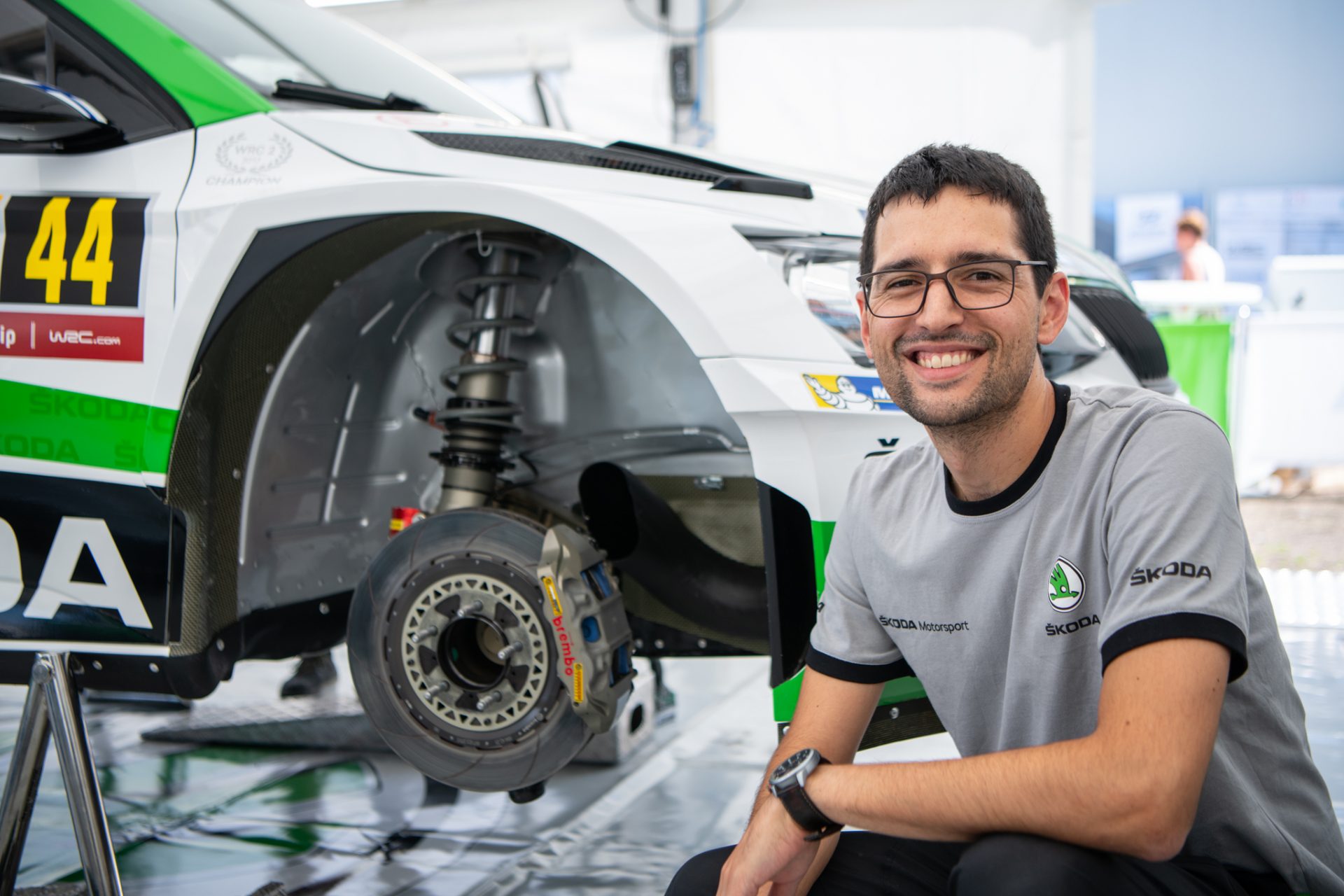While rallying is all about going fast, sometimes slowing down is what decides who wins and who loses. The ability to lose speed quickly and efficiently allows drivers to keep the speed for longer, brake into turns later and thus achieve faster overall pace.
Efficient brakes are especially important on fast, tarmac rallies like the recent Rallye Deutschland, where the high speeds and massive grip make for bigger braking forces. How does the FABIA R5 achieve its supreme braking capability? Read on!
6. Larger Brakes for Tarmac
The brake discs for a tarmac rally are larger in diameter (355 mm) compared to gravel brake discs (300 mm). There is higher grip available from the road conditions so higher forces are needed to decelerate the car. This bigger size disc and different pad material help to achieve this, together with the tarmac tyres.
5. Airflow for Cooling
Ventilated brake discs allow the air flow to go through the disc and cool it down. The grooves on the disc surface make room for the hot gasses and dust from the brake pad to escape easily.
4. No Holes, Longer Life
„We don’t use drilled brake discs as they have some drawbacks. They’re not as robust and the lifetime may be reduced,“ says Sérgio Dinis, ŠKODA Motorsport engineer responsible for the brake system of ŠKODA FABIA R5.
3. Infernal Temperatures
During hard braking, the temperature of brake discs can easily reach more than 700 °C.
2. Different Rally, Different Needs
Each rally is different. For example, the Rally Deutchland features many turns where you have to brake hard after a long straight. On the other hand, Tour de Corse is very twisty and drivers need to brake very often.
1. Consistency Is Key
And what is the greatest challenge? To make sure that the brakes work consistently from the beginning to the end of a stage, providing the driver with enough braking performance at all times. If you want to be fast, you need to brake as late as possible. And to do that, you must be sure that the brakes won’t fade or change their behaviour no matter what.











